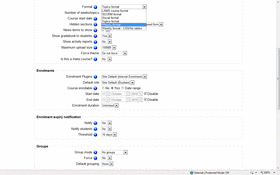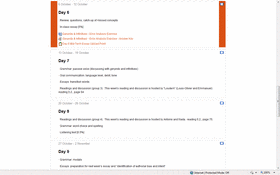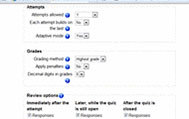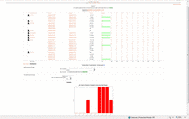From DECclic To Moodle – A Relatively Smooth Transition
In January, I will be assuming the coordination of English language services at DECclic as the Corporation undergoes what is probably the most dynamic year in its history. DECclic is transitioning from its current learning platform to Moodle, an increasingly popular platform used in colleges and universities throughout the world. I have been using both DECclic and Moodle in my English Second Language (ESL) college classes over the past few sessions, and wish to share these experiences with you and comment on the transition process.
As a DECclic user, the skills I acquired using the platform served me well as I transitioned to Moodle: the platforms are more similar than dissimilar. The devil, as they say, is in the details. For example, the file management system on both platforms serves the same function; however, the structure and method behind the systems is different and requires a small learning curve. If you’re in a CEGEP currently using DECclic, you will likely discover your own devil in your own details.
The first main difference between the two platforms that I noticed was the availability of a self-registration feature on Moodle. Since Moodle has just been adopted by DECclic, it is not yet possible to simply import students into the class; however, I have learned that I won’t have to wait very long for this feature to be added. (I should be able to update this information in my next ProfWeb contribution, currently scheduled for publication in late November.) In the meantime, I have found Moodle’s self-registration component to be straightforward and easy-to-use. Using our College’s internal messaging system, I sent a “Welcome” e-mail to all of my students the week before classes started. In that message, I included the two things students would need to self-register into my class: the URL for the classroom and a registration key. Thanks to a little incentive on my part-I wrote in the e-mail that the entire course syllabus was waiting for them on Moodle-all of the students were fully registered before the first class.
 Course Creation Menu.
Course Creation Menu.
 Weekly Plan.
Weekly Plan.
Another detail that drew my attention was the physical organization of the components on the Moodle desktop. Moodle offers a variety of desktop format choices. Two of these formats, in particular, seemed easier than the others to understand and related to my own way of managing a course: an organization based on course topics and one based on concepts covered each week. I chose the latter and haven’t regretted it. In so doing, I am able to clearly indicate to students whether we’re in a classroom or a computer lab on any given day, what they’ll need for class, subjects covered, and homework assigned.
From my perspective, the most significant difference between the DECclic and Moodle platforms relates to their distinctive evaluation modules. After having spent one session with DECclic, I have become proficient at Exam Studio and was disheartened to learn that my Exam Studio evaluations could not currently be imported into Moodle. Given that part of my role with DECclic will be to show other people how Moodle works, I “bit the proverbial bullet” and manually re-entered my evaluations into Moodle. It wasn’t fast by any means, but being able to copy and paste entire sentences helped considerably. Making Exam Studio questionnaires operational in Moodle is a priority concern for the DECclic Corporation, which made a commitment to its users in its action plan to ensure the usability of Exam Studio questionnaires in Moodle during the 2011-2012 academic year.
 Quiz settings.
Quiz settings.
 Quiz results.
Quiz results.
I assigned formative quizzes as homework in Moodle to reinforce concepts taught in class. It didn’t take long for me to discover that one of the advantages of using an online evaluation editor over more traditional pen-and-paper evaluations is the ability to see how students perform on quizzes before the students’ next class: In Moodle, it’s easy to see which questions or concepts haven’t been mastered and then develop and implement a plan which addresses the situation. This is not something that I could do with the current version of DECclic. (On a side note, this same strategy also allows teachers to learn who is doing their homework and who isn’t-useful data to have on hand when reviewing summative test results at a later date.)
Clearly, I will have my own homework cut out for me in my new role with DECclic since the Corporation is known for the rich support and training services that it offers to its users. I look forward to learning about how other people are using Moodle and the expectations that DECclic users may have concerning the transition from their current platform to Moodle. In the meantime, remember to keep an eye out for the November 29th edition of Profweb for a Profweb column on DECclic’s transition to Moodle.

